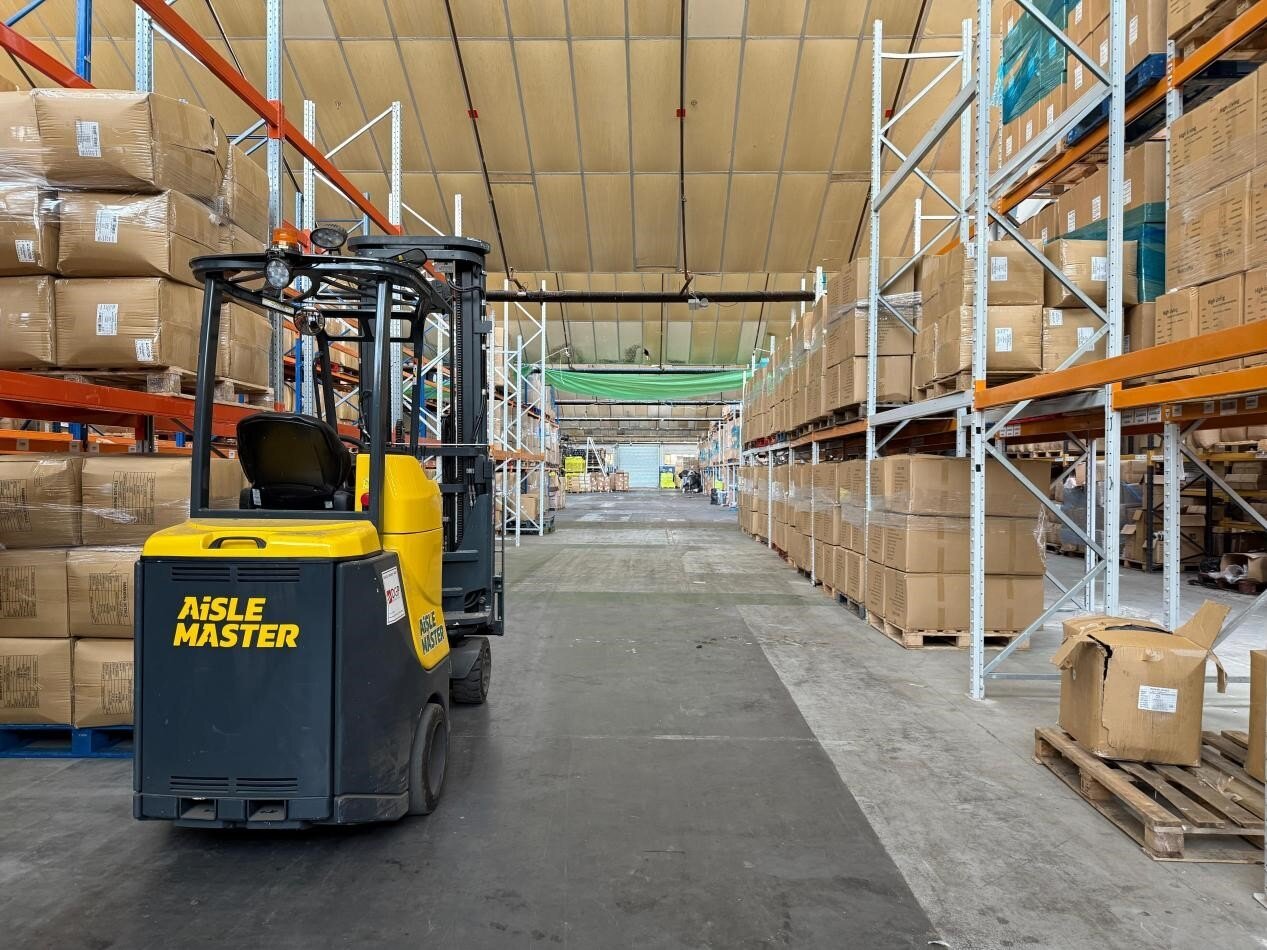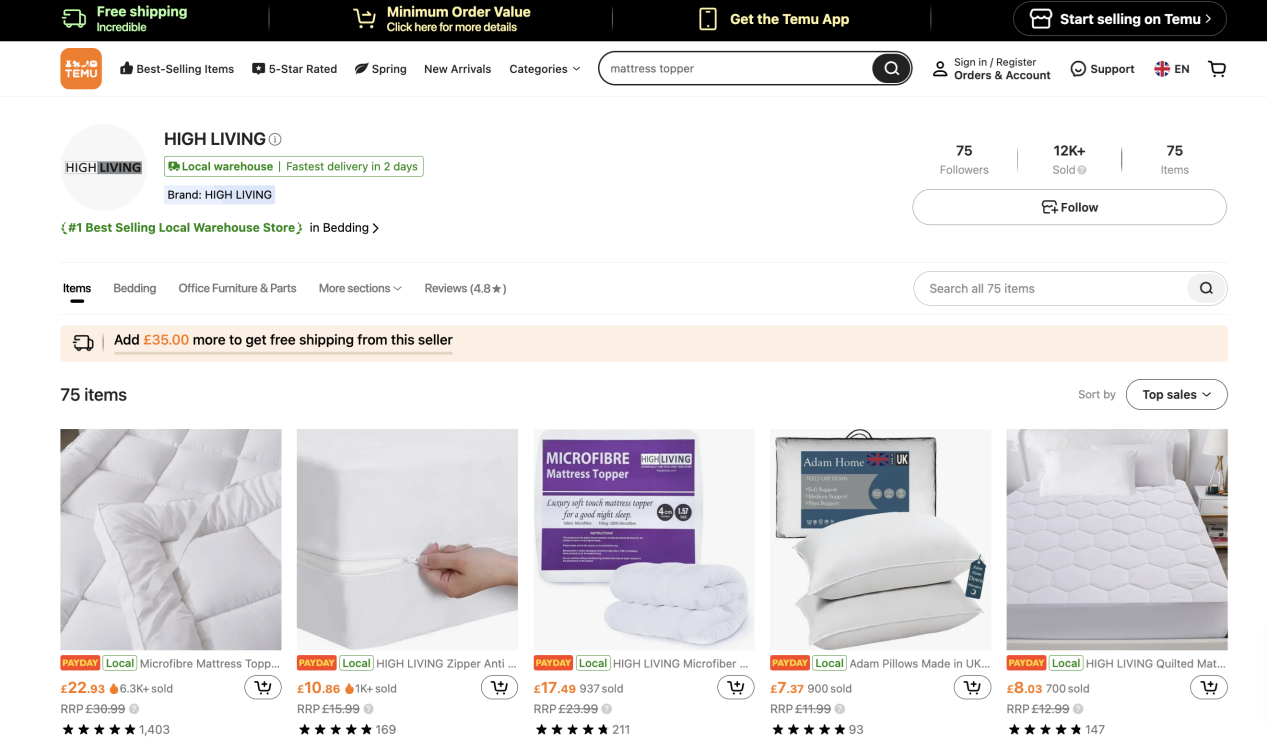Just months after listing his bedding products on Temu, UK-based seller Shahzad is seeing sales skyrocket—so much so that he’s considering shutting down his other e-commerce accounts within the next year or two to focus entirely on Temu.
One of his bedding listings has pulled in a staggering £140,000, setting a record and proving just how active and engaged Temu’s shoppers are. For Shahzad’s company, High Living, Temu isn't just another platform—it’s a game-changer.
Founded in 2015, High Living built its name on high-quality bedding at competitive prices, leveraging production sites in Poland, China, and Pakistan to keep costs low without sacrificing standards. By 2017, business was booming—raking in over £1 million a month while supplying major retailers across Europe and the U.S.
But then came the downturn.

Inside High Living’s Factory
Uphill Battle
As competition intensified, staying visible—and profitable—became an uphill battle. By 2021, online sales were slipping, and Shahzad started to feel the strain.
“Working with some large platforms became increasingly difficult,” he recalled. “Seller support was non-existent, and resolving issues could take months, often involving automated responses that made it hard to get any real support.”
One incident, in particular, pushed him to the edge. Despite submitting solid evidence to fight his case, a platform refunded a customer without even considering his side. “That is not a fair business,” he said.
Rising operational costs only made matters worse. Mounting commission fees and expensive ad spend were eating into profits, making it clear that a change was needed.

Inside High Living’s Warehouse
Turning Point
The turning point came when a Temu representative reached out.
At the time, Temu was actively recruiting local sellers, offering personalized support and transparent policies.
Intrigued, Shahzad decided to give it a shot—and what followed was a complete shift.
“The support from Temu made all the difference,” he said. “Whenever we faced an issue, there was always someone to talk to who could resolve it quickly. It was a stark contrast to the automated systems we were used to.”
Beyond that, Temu’s system actually rewards good sellers. Its ranking algorithms prioritize positive consumer reviews, high repurchase rates, and low return rates.
“Fair System”
“It’s a fair system,” Shahzad noted. “They understand the importance of supporting both consumers and sellers, which is crucial for a healthy marketplace.”
Shahzad says people often ask how Temu undercuts traditional platforms. The answer? Direct partnerships with factories.
“Some may find it difficult to understand Temu's model, but I know for sure that Temu works directly with factories,” he said. “That’s the key to their success—and why the prices are cheaper.”
A study by the Centre for Economics and Business Research (CEBR) found that UK households could save around £3,000 a year by shopping through direct distribution channels like Temu.

High Living's Shop on Temu
Supporting Communities
Temu’s local-to-local strategy isn’t just benefiting sellers—it’s supporting entire communities.
With a large warehouse in Glasgow and production facilities in Poland, High Living has a 400-strong workforce that continues to grow as sales climb.
“As we grow, we're able to hire more people and support more families,” Shahzad said. “The more we grow, the more people are not jobless.”
Right now, 40% of High Living’s sales come from online platforms—but Shahzad expects that number to double as more consumers shift to e-commerce.
And Temu is leading the charge.
Local Sellers
The platform’s local-to-local strategy is projected to drive up to 80% of Temu’s total sales in Europe, creating massive growth potential for sellers like High Living.
With record-breaking sales and a system that works for sellers, it's no wonder Shahzad is seriously considering making Temu his company’s sole focus in the next year or two.
“Temu isn’t just a platform—it’s a partner in growth,” Shahzad said. “It’s given my business global reach, fair treatment, and the tools to build something lasting for my team and communities.”







